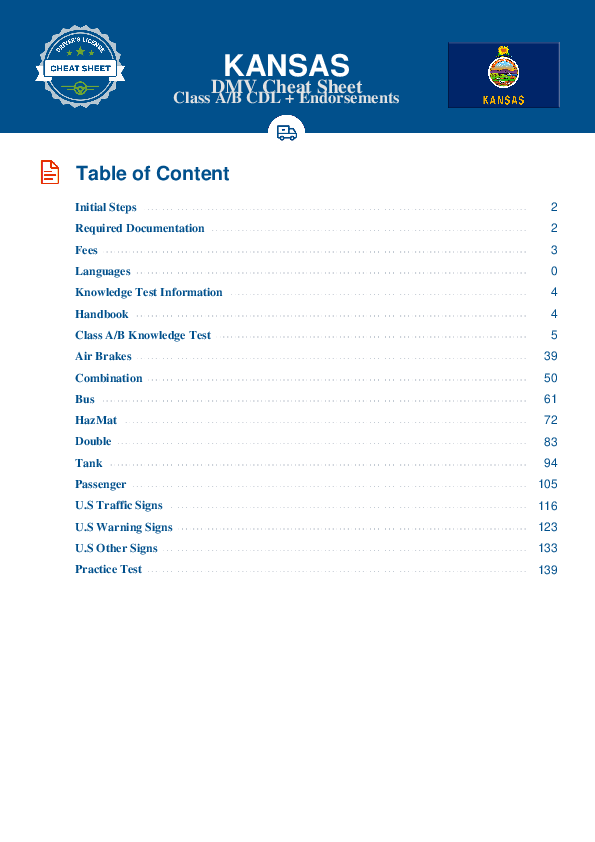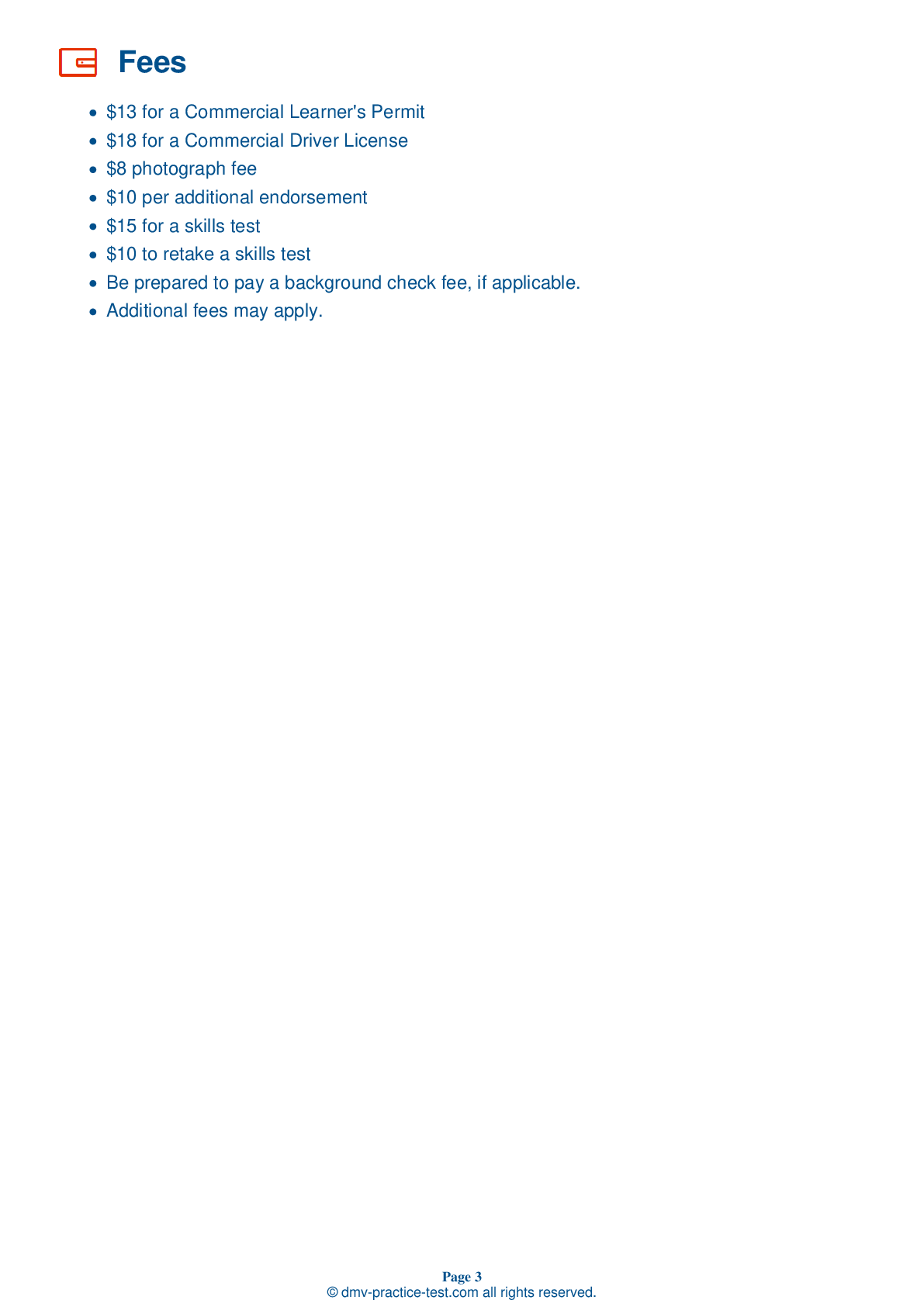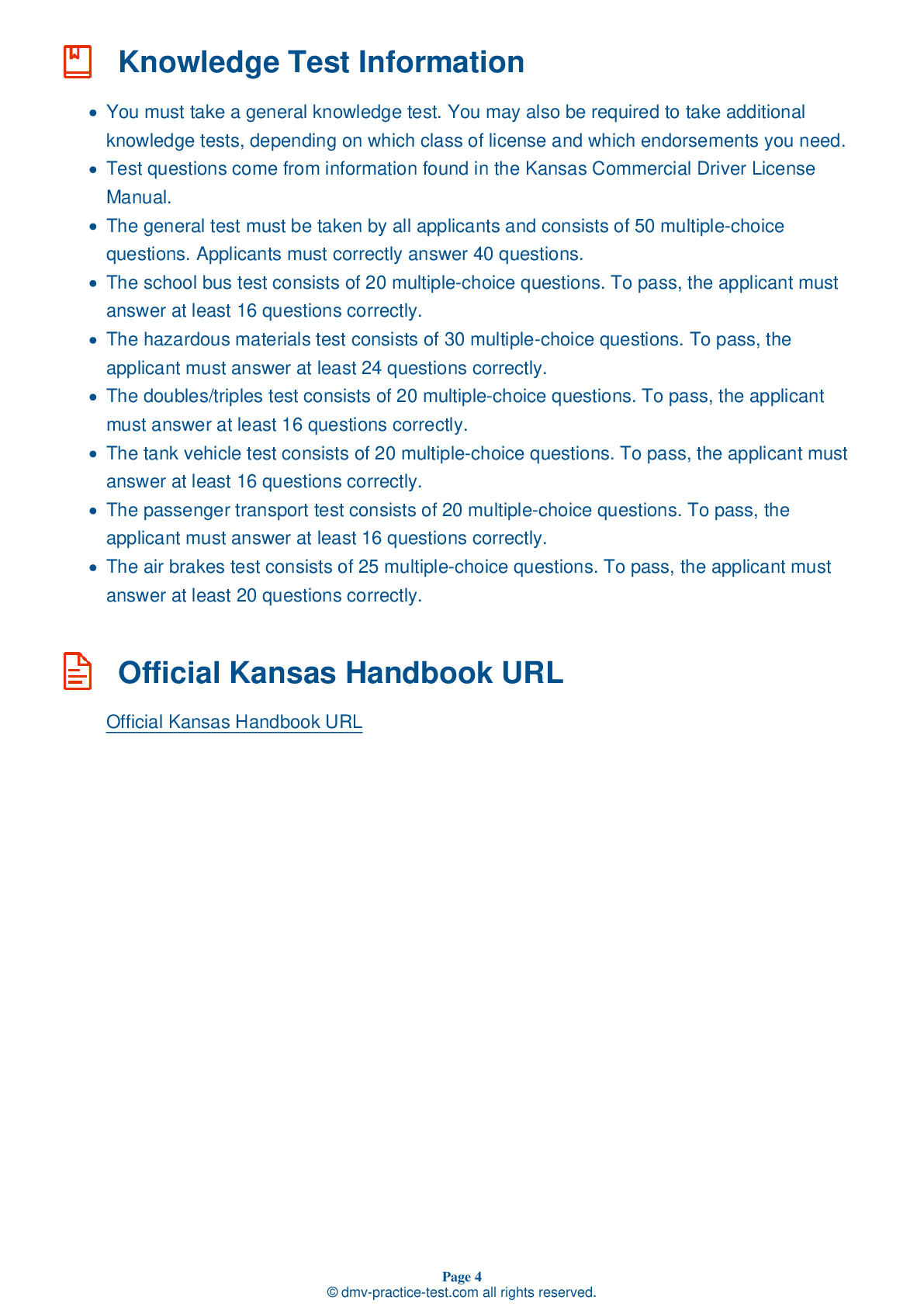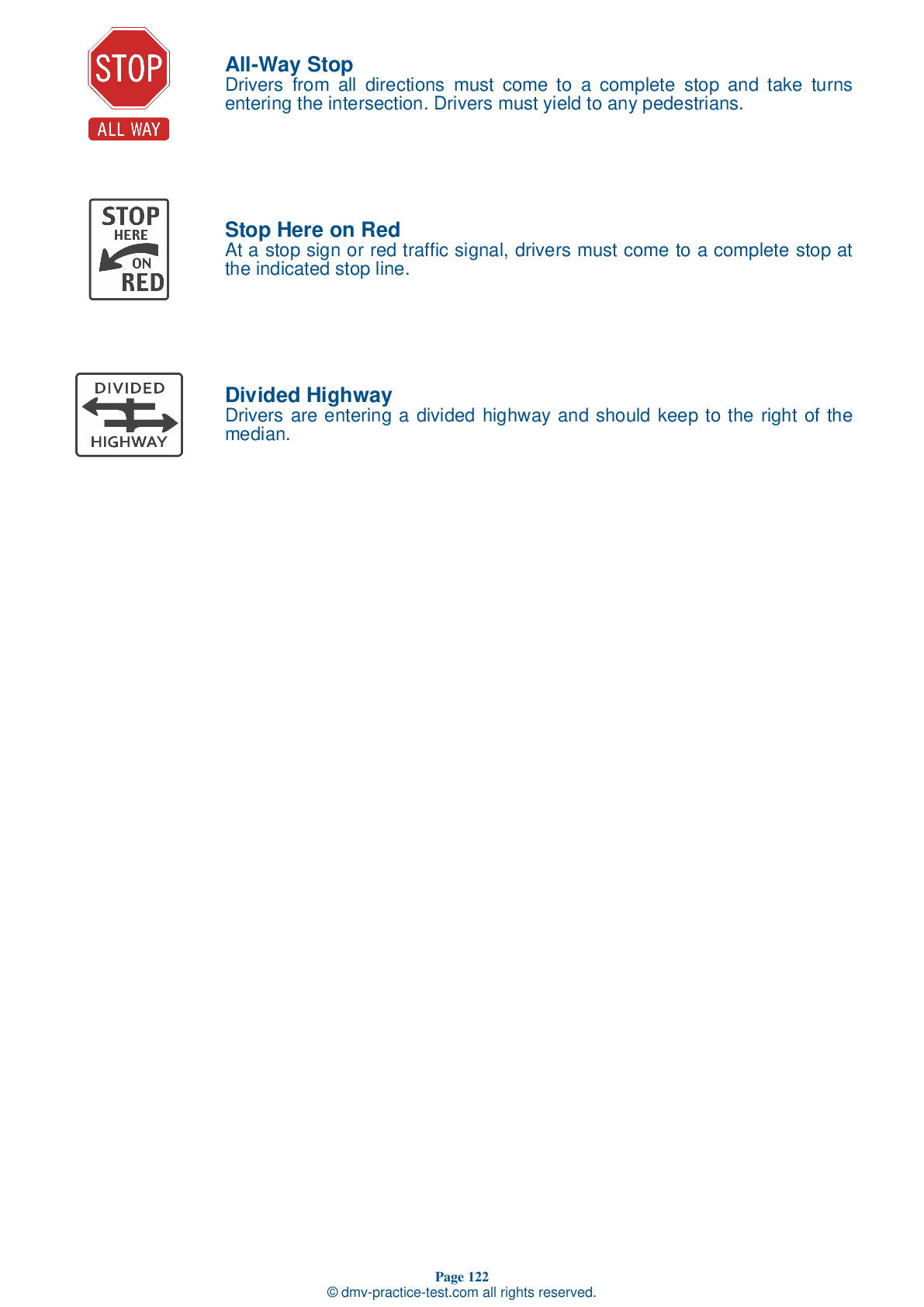Class B Driving Test | Kansas 2025 #1
Train for FREE online with our Kansas class B license test. The official exam test consists of several obligatory parts, with all of them checking your knowledge of different blocks of road rules. If you need to obtain a KS CDL class B permit in 2025, practice as much as possible. Free sample tests published on our website will help you check and improve your knowledge and boost your grades. Please bear in mind that CDL class B requirements may vary from state to state.
1 . When parked on the side of the road, you should:
Always turn on your four-way emergency flashers if you must park on the side of the road. This is especially important when traveling at night.
2 . Regarding winter driving, all of the following are true, except:
When driving during the winter, it is particularly important that your tires have adequate tread. You need a tread depth of at least 4/32 of an inch in every major groove on the front tires, and at least 2/32 of an inch on the back tires. Check the tread depths by using a gauge.
3 . Before a vehicle with dual air brakes is driven, pressure of at least ____ should be built up in both braking systems.
Before driving a vehicle with a dual air brake system, allow time for the air compressor to build up pressure of at least 100 psi in both the primary and secondary systems.
4 . Truck tractors with air brakes that were built on or after March 1, 1997 are equipped with:
Truck tractors with air brakes that were manufactured on or after March 1, 1997 are required to be equipped with Anti-Lock Braking Systems (ABS). ABS is required in any other type of vehicle with air brakes that was manufactured on or after March 1, 1998.
5 . What is removed when an air tank is drained?
In an air brake system, the air storage tanks are equipped with drains to allow water and compressor oil to be removed. The water and oil can damage the brakes if left to accumulate in the system.
6 . If your vehicle is hydroplaning, you should:
If your vehicle begins to hydroplane, do not apply the brakes. Instead, release the accelerator and push in the clutch. This will slow down your vehicle and help it regain traction.
7 . If convicted of a traffic violation, you must inform your employer ____ of the violation.
If you are convicted of any traffic violations while driving any vehicle, you must notify your employer within 30 days of the conviction. This rule excludes parking violations.
See the exact questions that will be on the 2025 Kansas DMV exam.
99.2% of people who use the cheat sheet pass the FIRST TIME
Lillian MCcranie explains how our CDL study guide was helpful in passing the exam and recommends it to everyone.
Cameron tells us how he purchased the CDL exam, and found it to be a useful tool which helped him pass the exam and find a job.



